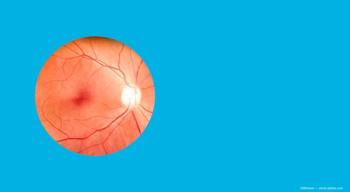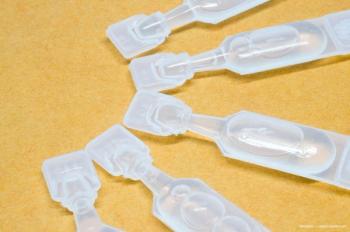
- Ophthalmology Times: June 2022
- Volume 47
- Issue 6
Therapeutic options can treat meibomian gland dysfunction
The treatments typically include application of heat, lid hygiene, and massage of eyelid.
By Doina Gherghel, MD, PhD, MEd; Jeffrey Gemi, MD; Gustavo De Moraes, MD, PhD, MPH
Although the existence of the meibomian glands (MGs) was first recognized in 200 AD by Galen,1 their obstructive pathology was only first mentioned in 1977 by McCulley and Sciallis2 and named meibomian gland dysfunction (MGD) by Korb and Henriquez in 1980.3
Nonetheless, by the late 1990s and early 2000s, the importance of lipids produced by the MGs for the tear film homeostasis was fully appreciated, as was the role played by MGD in the pathogenesis of dry eye disease (DED).4
In MGD, due to reasons not fully known, meibum exhibits a higher phase-transition temperature than normal.5 In addition, in MGD, meibum lipids become more saturated and contain less-branched chain hydrocarbons and more protein, therefore becoming more viscous. Thus, the delivery of meibum to the lid margin is impeded.6 As such, historically, therapies for MGD consisted mainly of mechanical application of heat, lid hygiene, and massage of the eyelid.7
All these methods are intended to facilitate the secretion of lipid products at the ocular surface by unclogging gland orifices and “softening” the meibum.8 In addition, lipid-based artificial tears and meibomian gland expression (MGX) have been advocated as efficient. Nevertheless, as discussed by Tang et al, because many of these methods are time consuming and somehow uncomfortable,9 they are impeded by low patient adherence and have limited effectiveness, especially in more advanced stages of the disease.
When bacterial colonization is present, oral agents of the tetracycline family (tetracycline, doxycycline, and minocycline) have also been found to improve the clinical picture in MGD. However, these therapies need to be given over long periods (usually months) and, therefore, in addition to low patient adherence, they can often be contraindicated for some patients or, if indicated, can lead to adverse effects that limit their success.10
In 2010, Maskin proposed a method of inserting stainless steel probes, up to 6 mm in size, directly into the meibomian gland orifices, with immediate relief in lid tenderness following treatment and improvements lasting 4 weeks.11
The discovery that a therapeutic temperature level of 41 °C applied at the tarsal conjunctiva is critical for the effective liquefaction and clearance of meibum obstructions has resulted in more efforts to optimize methods to deliver targeted, controlled, noninvasive thermal treatments at this level. In 2005, intense pulse light (IPL) therapy, due to its thermal effect that facilitates meibomian gland secretion by softening meibum, was proposed as an efficient method of treating MGD in patients with DED.12
In 2017, a report from the Tear Film and Ocular Surface Society’s Dry Eye Workshop II proposed IPL/MGX as a method to be used in MGD treatment.13 Nevertheless, many cases are refractory to this type of treatment and there are no clinical guidelines for using IPL/MGX in MGD, although it has been proposed that this method could be more efficient in early stages of the disease.9
There are many other devices on the market designed for delivering therapeutic levels of heat and pressure to the eyelids to melt altered meibum and to clear meibomian gland obstruction. These are summarized in the table, adapted from Mukamal.14
Among these, the TearCare system, the most recent such device to enter the market, represents a blink-assisted device that applies heat to the eyelids in patients suffering from MGD, DED, and/or blepharitis.
SmartLids, which is the TearCare system’s eyelid-worn, open eye, blink-assisted technology (Figure), is designed to offer conformance and adherence across the entire geography of eyelids and to deliver targeted, transtarsal thermal energy to the underlying MGs. It also allows complete removal of liquefied meibum with a tailored gland-by-gland approach under optimal visualization.
The TearCare software and sensor technology also enable tight control as well as the maintenance of a maximized external eyelid temperature of up to 45 °C for 15 minutes.16 Because the device allows patients to blink during the procedure, it is comfortable to wear.
A recently published, 1-month follow-up study demonstrated that a single TearCare treatment resulted in statistically and clinically significant improvements of all signs of DED in patients with MGD. In addition, this result was equivalent in its safety and effectiveness profile to the LipiFlow treatment.16 Moreover, this study showed that TearCare offered significantly better symptomatic relief as measured by proportion of subjects achieving Ocular Surface Disease Index improvement by at least 1 severity category and as reflected in the reduced need for use of lubricating drops compared with LipiFlow.
Conclusion
MGD includes an array of MG disorders, ranging from congenital to acquired. The common denominator for these disorders is the change in tear film composition that results in ocular discomfort, visual disruption, and evaporative dry eye. Congenital factors, aging, hormonal imbalance, diet, medications, contact lens wear, trauma, inflammation, and even the ocular surface’s microbiome have been implicated in the etiology of MGD. In the attempt to control MGD, many treatments have been tried with various success rates. Methods using a combination of noninvasive thermal treatments and MGX, such as TearCare, seem to have gained some advantages.
References
1 Duke-Elder S, Wybar KC. The Anatomy of the Visual System. Henry Kimpton; 1961.
2 McCulley JP, Sciallis GF. Meibomian keratoconjunctivitis. Am J Ophthalmol. 1977;84(6):788-793. doi:10.1016/0002-9394(77)90497-4
3 Korb DR, Henriquez AS. Meibomian gland dysfunction and contact lens intolerance. J Am Optom Assoc. 1980;51(3):243-251.
4 Bron AJ, Tiffany JM. The contribution of meibomian gland disease to dry eye. Ocul Surf. 2004;2(2):149-165. doi:10.1016/s1542-0124(12)70150-7
5 Foulks GN, Borchman D. Meibomian gland dysfunction: the past, present, and future. Eye Contact Lens. 2010;36(5):249-253. doi:10.1097/ICL.0b013e3181ef0d37
6 Nagymihalyi A, Dikstein S, Tiffany JM. The influence of eyelid temperature on the delivery of meibomian oil. Exp Eye Res. 2004;78(3):367-370. doi:10.1016/s0014-4835(03)00197-0
7 Paranjpe DR, Foulks GN. Therapy of meibomian gland disease. Ophthalmol Clin North Am. 2003;16(1):37-42. doi:10.1016/s0896-1549(02)00106-2
8 Geerling G, Tauber J, Baudouin C, et al. The international workshop on meibomian gland dysfunction: report of the subcommittee on management and treatment of meibomian gland dysfunction. Invest Ophthalmol Vis Sci. 2011;52(4):2050-2064. doi:10.1167/iovs.10-6997g
9 Tang Y, Liu R, Tu P, et al. A retrospective study of treatment outcomes and prognostic factors of intense pulsed light therapy combined with meibomian gland expression in patients with meibomian gland dysfunction. Eye Contact Lens. 2021;47(1):38-44. doi:10.1097/ICL.0000000000000704
10 Dougherty JM, McCulley JP, Silvany RE, Meyer DR. The role of tetracycline in chronic blepharitis. Inhibition of lipase production in staphylococci. Invest Ophthalmol Vis Sci. 1991;32(11):2970-2975.
11 Maskin SL. Intraductal meibomian gland probing relieves symptoms of obstructive meibomian gland dysfunction. Cornea. 2010;29(10):1145-1152. doi:10.1097/ICO.0b013e3181d836f3
12 Toyos R, Buffa CM, Youngerman SM. Case report: Dry-eye symptoms improve with intense pulsed light treatment. EyeWorld News Magazine. 2005
13 Jones L, Downie LE, Korb D, et al. TFOS DEWS II management and therapy report. Ocul Surf. 2017;15(3):575-628. doi:10.1016/j.jtos.2017.05.006
14 Mukamal R. 12 devices for treating dry eyes. American Academy of Ophthalmology. November 12, 2020. https://www.aao.org/eye-health/tips-prevention/how-to-treat-dry-eye-devices
15 Tauber J, Owen J, Bloomenstein M, Hovanesian J, Bullimore MA. Comparison of the iLUX and the LipiFlow for the treatment of meibomian gland dysfunction and symptoms: a randomized clinical trial. Clin Ophthalmol. 2020;14:405-418. doi:10.2147/OPTH.S234008
16 Gupta PK, Holland EJ, Hovanesian J, et al. TearCare for the treatment of meibomian gland dysfunction in adult patients with dry eye disease: a masked randomized controlled trial. Cornea. 2022;41(4):417-426. doi:10.1097/ICO.0000000000002837
Articles in this issue
Newsletter
Don’t miss out—get Ophthalmology Times updates on the latest clinical advancements and expert interviews, straight to your inbox.



















































.png)


